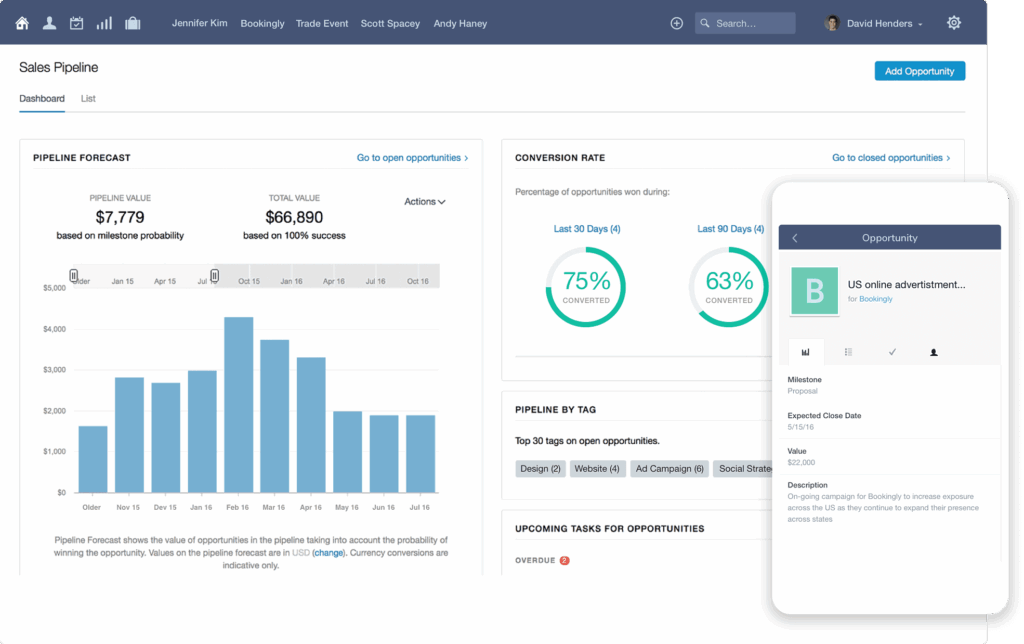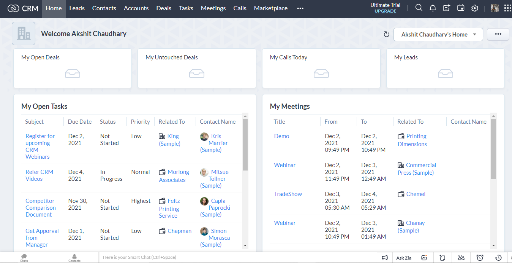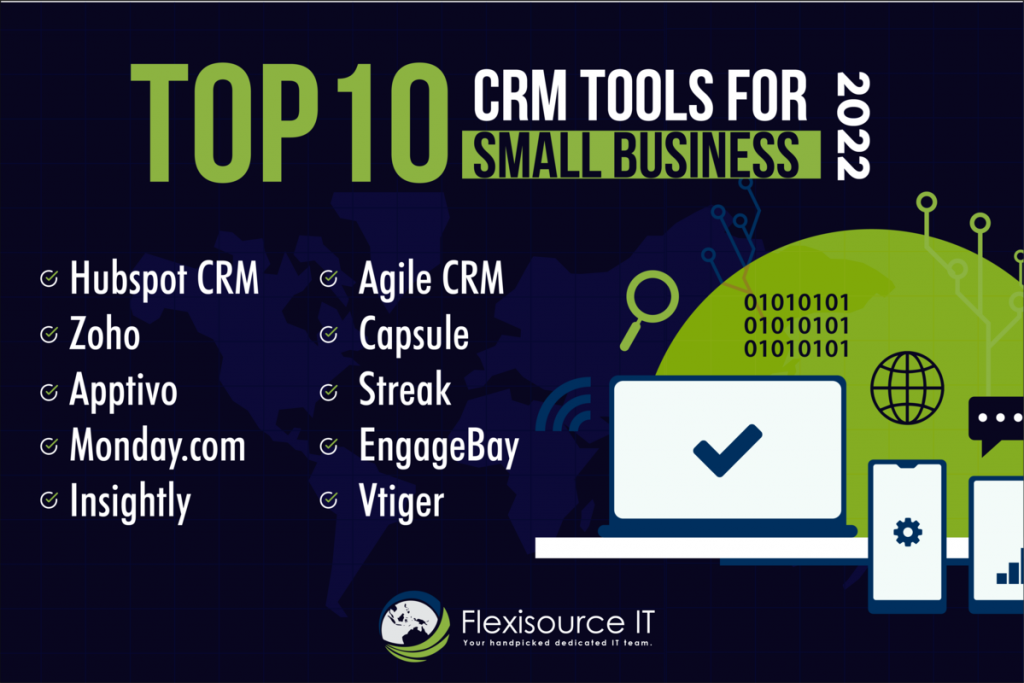
Being a small artist is a beautiful, often chaotic, journey. You’re not just creating; you’re a marketer, a salesperson, a bookkeeper, and, let’s face it, a juggler of a million different things. In the whirlwind of crafting your art and getting it seen, it’s easy for the business side to get lost in the shuffle. That’s where a Customer Relationship Management (CRM) system comes in. It’s not just for big corporations; the right CRM can be a game-changer for small artists, helping you manage your relationships, streamline your workflow, and ultimately, sell more art.
This guide will dive deep into the best CRM systems specifically tailored for small artists. We’ll explore what makes a CRM truly valuable for your unique needs, discuss the key features to look for, and highlight the top contenders in the market. Get ready to transform your artistic endeavor from a passion project into a thriving business.
Why Small Artists Need a CRM: Beyond the Brushstrokes
You might be thinking, “I’m an artist, not a salesperson!” And that’s fair. But even the most introverted artist needs to connect with their audience, manage their sales, and keep track of their finances. A CRM system isn’t about pushing products; it’s about building relationships. Here’s why a CRM is invaluable for small artists:
- Centralized Contact Management: Say goodbye to scattered spreadsheets, scribbled notes, and a memory that sometimes fails you. A CRM consolidates all your contacts – collectors, galleries, potential clients, and collaborators – in one easily accessible place.
- Improved Communication: Send personalized emails, track your interactions, and nurture relationships with your audience. A CRM helps you stay top-of-mind and keep your collectors engaged.
- Sales Tracking and Management: From initial inquiries to completed sales, a CRM helps you track every step of the customer journey. You can manage invoices, track payments, and analyze your sales data to identify trends.
- Workflow Automation: Automate repetitive tasks like sending follow-up emails, scheduling appointments, and generating reports. This frees up your time to focus on what you do best: creating art.
- Enhanced Organization: Keep track of your artwork inventory, exhibitions, and deadlines. A CRM helps you stay organized and avoid missing important opportunities.
- Data-Driven Decisions: Analyze your sales data, track your marketing efforts, and identify your most successful strategies. This allows you to make informed decisions about your business.
Key Features to Look for in a CRM for Artists
Not all CRM systems are created equal. When choosing a CRM, consider these essential features that are particularly beneficial for artists:
1. Contact Management and Segmentation
At its core, a CRM is a contact management tool. Look for features that allow you to:
- Store detailed contact information: Name, email, phone number, address, social media profiles, and any other relevant information about your contacts.
- Segment your contacts: Group your contacts based on various criteria, such as their interests, purchase history, location, or the source of the lead. This allows you to send targeted messages and personalize your communication.
- Tagging and Custom Fields: Use tags to categorize contacts (e.g., “collector,” “gallery owner,” “potential buyer”) and create custom fields to store unique information relevant to your art business (e.g., “favorite artist,” “medium of interest,” “budget”).
2. Email Marketing and Communication
Effective communication is key to building relationships with your audience. A good CRM should offer robust email marketing features, including:
- Email templates: Create professional-looking emails with ease.
- Email automation: Set up automated email sequences to nurture leads, send welcome emails, and follow up with potential clients.
- List segmentation: Send targeted email campaigns to specific segments of your audience.
- Email tracking: Monitor open rates, click-through rates, and other metrics to gauge the effectiveness of your email campaigns.
- Personalization: Customize your emails with the contact’s name, purchase history, and other relevant information.
3. Sales Pipeline Management
Track your sales process from start to finish. A sales pipeline feature allows you to:
- Visualize your sales process: See where each lead is in your sales pipeline (e.g., “lead,” “qualified,” “proposal sent,” “closed won”).
- Track deals and opportunities: Manage your sales opportunities, including the value of the deal, the estimated closing date, and the stage of the deal.
- Set reminders and follow-up tasks: Stay on top of your sales activities by setting reminders and tasks to follow up with leads.
- Generate reports: Track your sales performance and identify areas for improvement.
4. Inventory Management (Artwork Tracking)
For artists, managing your inventory is crucial. Look for a CRM that allows you to:
- Track your artwork: Store information about your artwork, such as the title, dimensions, medium, price, and availability.
- Manage your inventory: Keep track of which pieces are available, sold, or on consignment.
- Generate artwork reports: Create reports on your inventory, sales, and other relevant data.
- Attach images: Easily upload and associate images of your artwork with each piece.
5. Integrations
Consider which other tools you already use. A CRM that integrates with these tools can significantly streamline your workflow. Look for integrations with:
- Email marketing platforms: Mailchimp, Constant Contact, etc.
- Social media platforms: Facebook, Instagram, etc.
- Accounting software: QuickBooks, Xero, etc.
- Website builders: WordPress, Squarespace, etc.
- Payment processors: PayPal, Stripe, etc.
6. Reporting and Analytics
Data is your friend. A good CRM provides valuable insights into your business performance. Look for features like:
- Sales reports: Track your sales by artwork, customer, or time period.
- Marketing reports: Analyze the effectiveness of your marketing campaigns.
- Contact activity reports: See how your contacts are interacting with your business.
- Customizable dashboards: Create dashboards that display the key metrics that are most important to you.
7. Ease of Use and Affordability
A CRM should be easy to learn and use. Look for a system with a user-friendly interface and helpful resources, such as tutorials and support documentation. Also, consider your budget. Many CRM systems offer various pricing plans, so choose one that fits your needs and your budget.
Top CRM Systems for Small Artists: A Curated Selection
Now, let’s dive into some of the top CRM systems specifically designed or well-suited for the needs of small artists. Each option has its strengths, so consider your specific requirements when making your choice.
1. HubSpot CRM (Free and Paid Options)
Best for: Artists looking for a free, comprehensive CRM with robust features and scalability.
Why it’s great for artists: HubSpot offers a powerful free CRM that’s perfect for getting started. It includes contact management, deal tracking, email marketing tools, and basic reporting. As your art business grows, you can upgrade to a paid plan for more advanced features, such as marketing automation, advanced analytics, and custom reporting. HubSpot is also known for its user-friendly interface and extensive resources, making it easy to learn and use.
Key features for artists:
- Free plan with unlimited users and contacts.
- Contact management with detailed contact profiles.
- Deal tracking to manage your sales pipeline.
- Email marketing tools to send newsletters and promotional emails.
- Basic reporting and analytics.
- Integrations with popular apps like Gmail, Outlook, and social media platforms.
- User-friendly interface and extensive resources.
Potential drawbacks: The free plan has limitations on the number of emails you can send per month. Advanced features require a paid subscription.
2. Zoho CRM (Free and Paid Options)
Best for: Artists who need a customizable CRM with a wide range of features and integrations at an affordable price.
Why it’s great for artists: Zoho CRM offers a free plan for up to three users, making it a great option for solo artists or small teams. It provides a comprehensive set of features, including contact management, sales pipeline management, email marketing, and workflow automation. Zoho CRM is also highly customizable, allowing you to tailor the system to your specific needs. It integrates with a wide range of other apps, including accounting software, social media platforms, and email marketing tools.
Key features for artists:
- Free plan for up to three users.
- Contact management with detailed contact profiles.
- Sales pipeline management with customizable stages.
- Email marketing tools with templates and automation.
- Workflow automation to streamline your processes.
- Extensive integrations with other apps.
- Customizable dashboards and reports.
Potential drawbacks: The free plan has limitations on the number of contacts and features. The interface can be overwhelming for some users due to the vast number of features.
3. Pipedrive (Paid)
Best for: Artists focused on sales and pipeline management, with a strong emphasis on visual organization.
Why it’s great for artists: Pipedrive is designed with a focus on sales pipeline management. Its visual interface makes it easy to track your deals and opportunities, and its automation features help you stay on top of your sales activities. Pipedrive also integrates with various other apps, including email marketing platforms and accounting software. While it doesn’t offer a free plan, its pricing is competitive, and it offers a free trial to test the platform.
Key features for artists:
- Visual sales pipeline management.
- Deal tracking with customizable stages.
- Activity reminders and follow-up tasks.
- Email integration and automation.
- Reporting and analytics.
- Integrations with other apps.
Potential drawbacks: No free plan is available. The focus is primarily on sales, so it may not be the best choice if you need extensive marketing features.
4. HoneyBook (Paid)
Best for: Artists who need a CRM that also handles client communication, invoicing, and contracts.
Why it’s great for artists: HoneyBook is a comprehensive business management platform that includes CRM features. It’s designed to help artists manage their client relationships, send invoices, create contracts, and track payments. HoneyBook offers a user-friendly interface and automation features to streamline your workflow. While it doesn’t have a free plan, it offers a free trial to test the platform. It is particularly useful for artists who work with commissions or have ongoing client projects.
Key features for artists:
- Client communication and project management.
- Invoicing and payment processing.
- Contracts and proposals.
- Workflow automation.
- Contact management.
- Scheduling tools.
Potential drawbacks: Pricing is higher than some other CRM options. The focus is more on project management and client communication than on extensive sales pipeline features.
5. Dubsado (Paid)
Best for: Artists seeking a powerful, all-in-one business management solution, particularly those who offer services or commissions.
Why it’s great for artists: Similar to HoneyBook, Dubsado is a comprehensive business management platform with robust CRM capabilities. It excels at managing client projects, sending invoices, creating contracts, and automating workflows. Dubsado offers a high degree of customization and is well-suited for artists who want a centralized platform to manage their entire client journey, from initial contact to project completion. It’s particularly useful for artists who take on commissions or offer services like portraits or custom art. While it’s a paid platform, its features make it a worthwhile investment for many artists.
Key features for artists:
- Detailed contact and project management.
- Customizable contracts and proposals.
- Automated workflows to streamline processes.
- Invoicing and payment processing.
- Client portals for easy communication.
- Time tracking and reporting.
Potential drawbacks: Steeper learning curve compared to simpler CRM options. May be more complex than needed for artists with very simple business models.
6. Airtable (Free and Paid Options)
Best for: Artists who want a flexible and visually appealing CRM that can be customized to their specific needs, and who are comfortable with a spreadsheet-like interface.
Why it’s great for artists: Airtable is a versatile, cloud-based spreadsheet-database hybrid. It’s incredibly flexible and can be customized to manage contacts, track inventory, manage sales, and even organize your marketing efforts. The visual interface makes it easy to organize and visualize your data. Airtable offers a free plan with limitations and paid plans with more features and storage. It’s a great option for artists who like to have a lot of control over their data and workflows.
Key features for artists:
- Flexible database structure that can be customized to your needs.
- Visual interface with various views (grid, calendar, kanban, gallery).
- Contact management and segmentation.
- Inventory tracking.
- Project management features.
- Integrations with other apps.
Potential drawbacks: Can have a steeper learning curve compared to dedicated CRM systems. Requires some technical knowledge to set up and customize. The free plan has limitations on storage and records.
Choosing the Right CRM: A Personalized Approach
The best CRM system for you depends on your individual needs and the stage of your art business. Consider these factors when making your decision:
- Your Budget: Determine how much you’re willing to spend on a CRM. Free options are great for getting started, while paid options offer more features and scalability.
- Your Business Needs: What are your biggest pain points? Do you need help with contact management, sales pipeline management, email marketing, or inventory tracking?
- Your Technical Skills: How comfortable are you with technology? Some CRM systems are more user-friendly than others.
- Your Future Goals: Consider your long-term goals for your art business. Choose a CRM that can grow with you.
Here’s a quick guide to help you decide:
- Just starting out and on a budget? Start with HubSpot CRM’s free plan or Zoho CRM’s free plan.
- Need a strong focus on sales pipeline management? Pipedrive is an excellent choice.
- Want an all-in-one solution for client management, invoicing, and contracts? HoneyBook or Dubsado are excellent options.
- Want a flexible and customizable system? Airtable is a great choice.
Tips for Successfully Implementing a CRM
Once you’ve chosen your CRM, follow these tips to ensure a smooth implementation and maximize its benefits:
- Import your existing contacts: Transfer your contacts from your spreadsheets, email lists, and other sources into your CRM.
- Customize your CRM: Tailor the system to your specific needs by adding custom fields, creating custom views, and setting up automation workflows.
- Train your team (if applicable): If you have a team, train them on how to use the CRM and how to follow your processes.
- Use it consistently: Make it a habit to log all your interactions with your contacts in the CRM. The more you use it, the more valuable it will become.
- Analyze your data: Regularly review your sales data, marketing reports, and other metrics to identify areas for improvement.
- Integrate with your other tools: Connect your CRM with your email marketing platform, social media accounts, and other tools to streamline your workflow.
- Stay updated: CRM systems are constantly evolving. Stay up-to-date with new features and best practices to get the most out of your CRM.
Conclusion: Painting a Brighter Future for Your Art Business
Choosing and implementing the right CRM system is an investment in the future of your art business. By streamlining your processes, building stronger relationships with your audience, and making data-driven decisions, you can focus on what you love: creating art. Don’t let the business side of your art get lost in the shuffle. Embrace the power of a CRM and unlock your full potential as a thriving artist.
The journey of an artist is a marathon, not a sprint. With the right tools, like a well-chosen CRM, you can navigate the course with greater ease, efficiency, and, ultimately, success. So, take the plunge, explore the options, and find the perfect CRM to help you build your artistic empire. Your masterpieces – and your business – will thank you.

